This is the ultimate Nissan GT-R, and a fitting curtain call for the brilliant R35 series that has been around now for more than a decade. It is 530kW of muscle and refinement, a blend of Japanese pragmatism and Italian craftsmanship. And each of only 50 built will cost at least $1.5 million. For a Nissan!
And how did all of this happen? Well, stand by, because this is going to sound like the weirdest hypercar development process you’ve ever heard of.

For starters, Nissan didn’t do any of that extra engineering. In fact, neither did NISMO, Nissan’s performance arm. Nissan’s most outrageous production model ever didn’t even spring from a fertile mind in Japan – bizarrely, it all came from the ever-fizzing minds of ItalDesign, the legendary design house just outside Turin in northern Italy.
The details are pretty sketchy about all of this, because the official backstory has been mixed in with too much saccharine to be credible, but insiders tell the story like this, and it has enough elements of truth in it to be credible: ItalDesign went to Nissan and suggested it crank up a million-euro version of the GT-R because both it and the GT-R were turning 50.
ItalDesign might now be owned by Audi, but it is free to work wherever, and for whomever, it wants. And it has form here. The company’s Director of Style is Felippo Perini, who was the design boss at Lamborghini when it turned the $200,000 Mucielago into the million-euro Reventon, with just a bit of bodywork and some new cluster dials.

They know how this stuff works: take something that’s already built and already fast, generate hype (say, around the Goodwood Festival of Speed) then announce that public interest has forced them into a high-cost, limited-edition run. Then, probably, do the same thing again with a convertible.
The GT-R was a sure thing, ItalDesign insiders insist, because it had already been in production for 11 years and it needed a last hurrah. Nissan had done plenty of GT-R specials themselves, including the Spec V, the Black Edition, the GT-R NISMO and the GT-R NISMO N-Attack, but for some reason they’d never considered charging 10 times as much as the standard car for any of them. It took ItalDesign’s chutzpah to do that.
Nissan insists it did the styling (with Nissan Design Europe doing the body and Nissan Design America the interior) and that ItalDesign did the engineering work. Now, part of that is credible, because ItalDesign is geared up to do engineering work (it did the Audi Q2 from the initial sketches all the way into pre-production, for example). But did Nissan really do the design work? Computer suggests “no”.
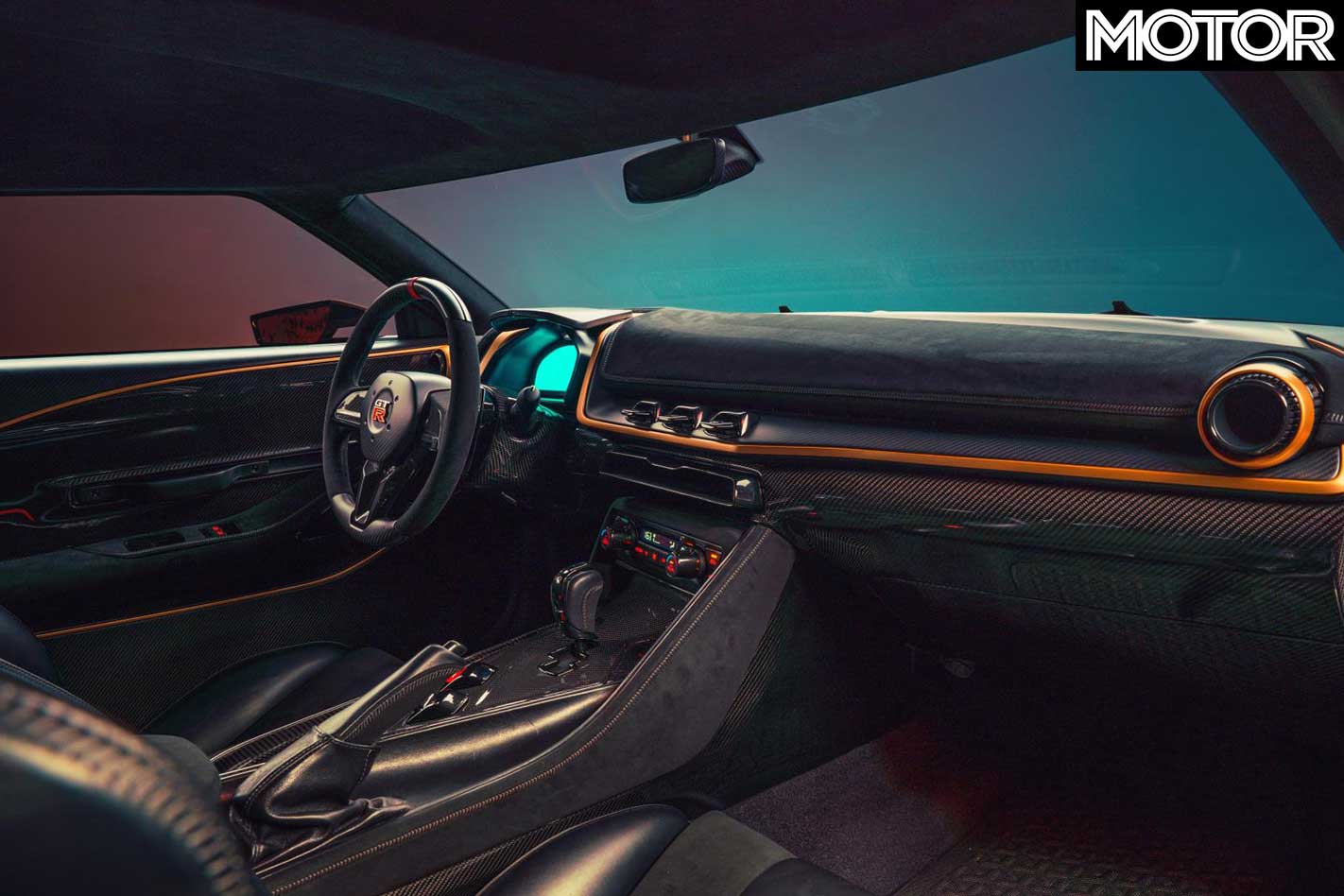
Regardless, it looks wicked, from every angle, and the production cars will depart from the grey-and-gold concept car (and the bright blue production prototype) to whatever the hell the customer wants them to be.
And the base spec (it’s always a base spec) can be turned into almost anything a customer is willing to pay for, so no two GT-R50s will be the same. In fact, no two GT-R50s will be allowed to be the same. It’s like the GT-R50 equivalent of the first rule of Fight Club. If someone claims your preferred specification first, well, bad luck, find another one.
“It’s a GT-R without limits,” Nissan global design chief Alfonso Albaisa said. Hard to disagree.
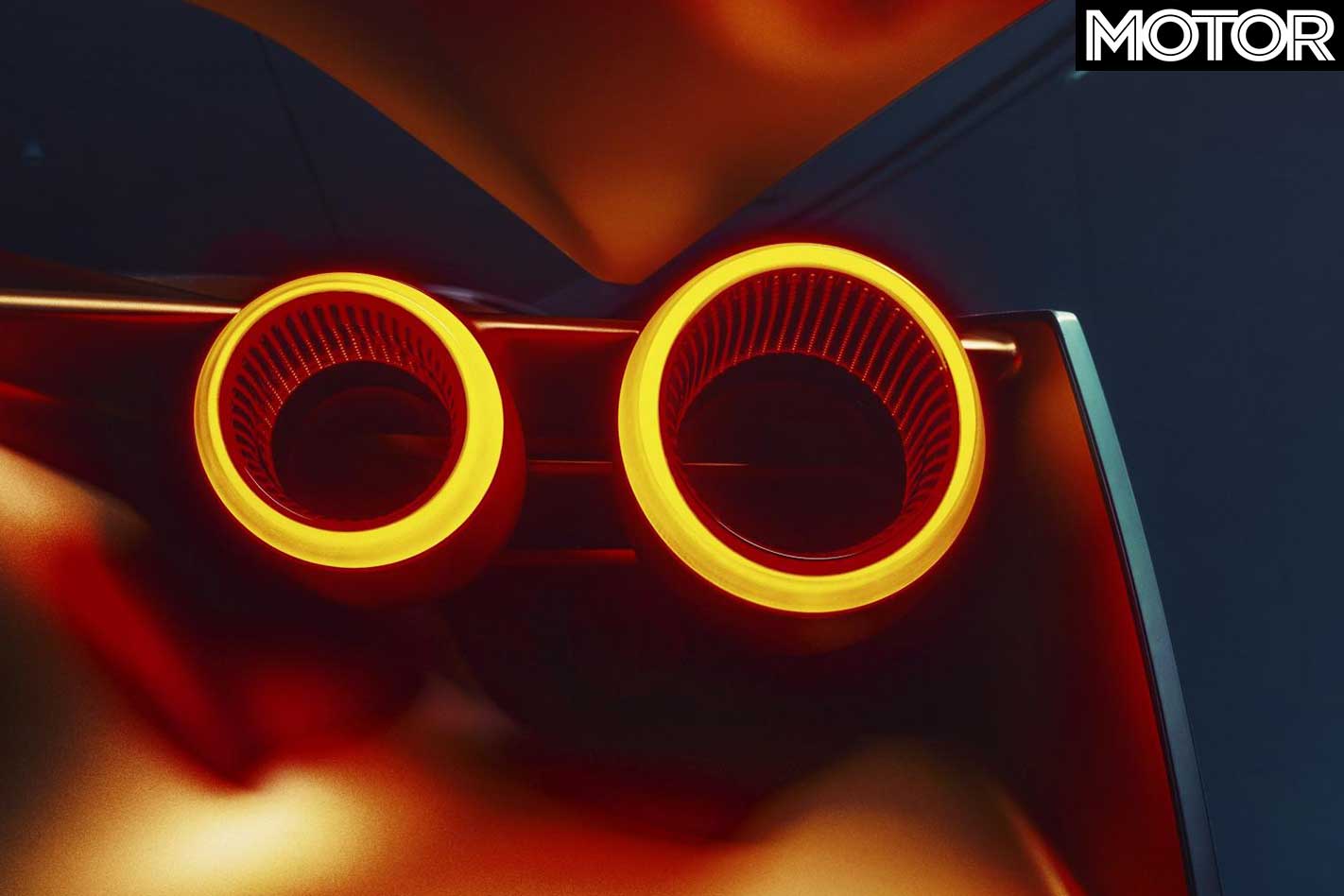
This car is instantly familiar yet totally new, with every crease hinting at the stock GT-R but moving the game forward aggressively, even brutally, right down to a roofline that’s more than 50mm lower. It boasts of its Samurai blade behind the front wheels, but the lights are also new, the rear wing is now adjustable by the driver, and it all rides on custom 21-inch wheels and Michelin Pilot Super Sport tyres. The production car is not quite as faithful to the concept inside, where the motorsport-derived Motec CDL3 screen gets turfed for a standard GT-R unit, plus its infotainment screen.
The GT-R’s mighty 3.8-litre V6 gets GT3 racing turbochargers instead of the just plain wicked units on either side of the engine, but the engineering advancements haven’t stopped there. Well, they couldn’t stop there in the hunt for 530kW of power and 780Nm of torque, because bigger huffers only get you so far. The intercoolers have been drastically embiggened, there are new pistons, a new camshaft, quicker-squirting oil injectors, new pistons and a hard-core new crankshaft.
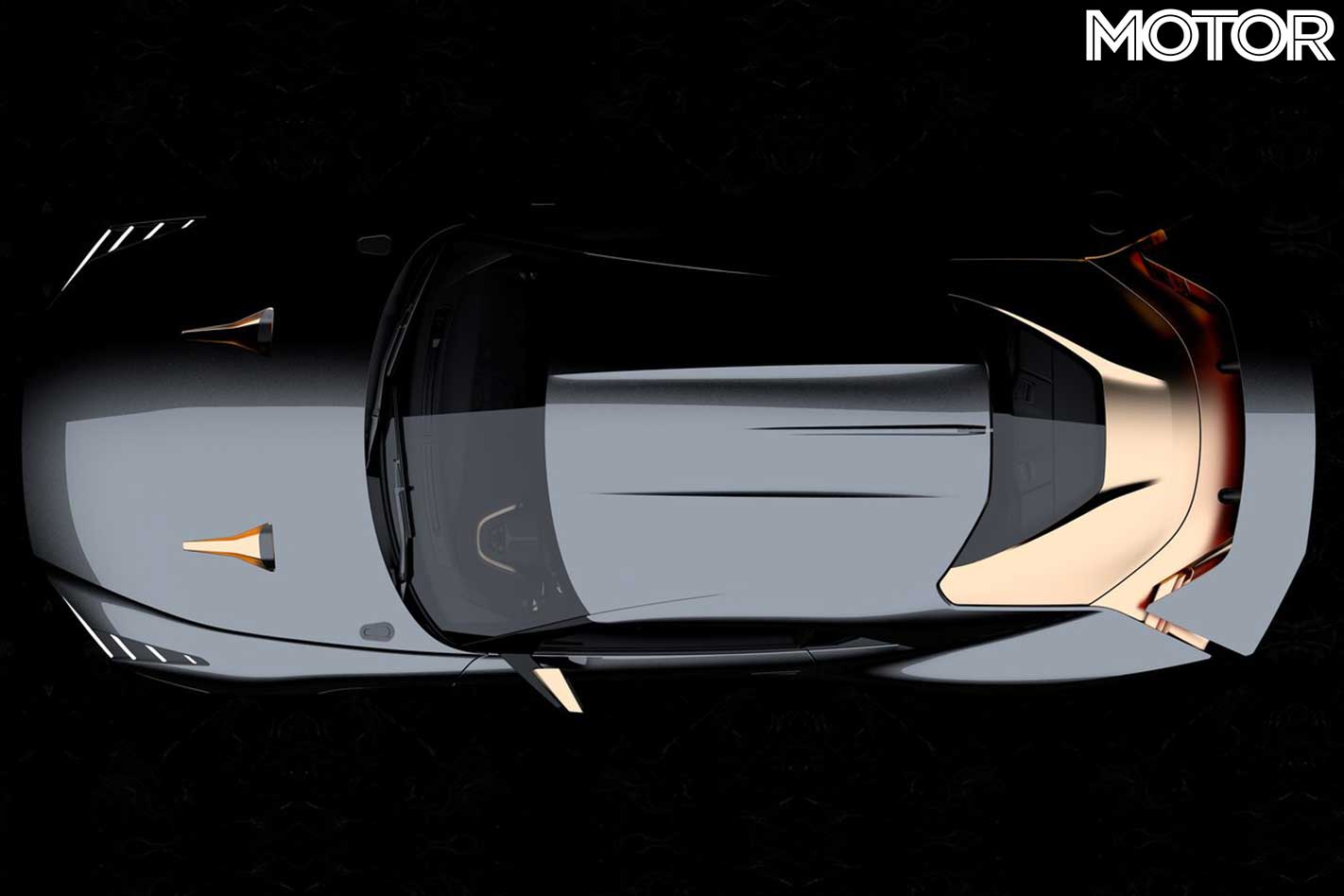
After making the engine 90kW more powerful than the GT-R NISMO, ItalDesign needed to make mechanical changes aft of the flywheel, lest it risk turning their 50 hypercars into roadside-furniture magnets.
The brakes were the first things changed, with new six-piston Brembo front calipers biting 390mm compound drilled discs, and four-piston Brembos down the back. A set of DampTronic adaptive dampers from Bilstein (who clearly need help in their damper-naming department; apply now) control the stiffer springs and anti-roll bars, the six-speed dual-clutch transaxle has been stiffened, and even the differentials and driveshafts have spent time in the gym.

But the real problem facing the GT-R50 is not the engineering. The world of the low-volume hypercar is pretty much like the world of comedy: it’s all about the timing. And Nissan’s timing may go down in history as one of the car industry’s worst ever – and there have been a few to choose from. There was Jaguar, launching the underdone XJ220 into the teeth of a global recession. There was the McLaren F1, the car still held up as the gold standard of hypercars, whose sales petered out to a trickle because of the same recession. The list goes on.
But the GT-R50’s timing has been appalling for a whole different reason. See, for all its power and fury, the GT-R50 is set to become the flagship of a carmaker embroiled in one of the most outrageous self-inflicted corporate firestorms in automotive history.
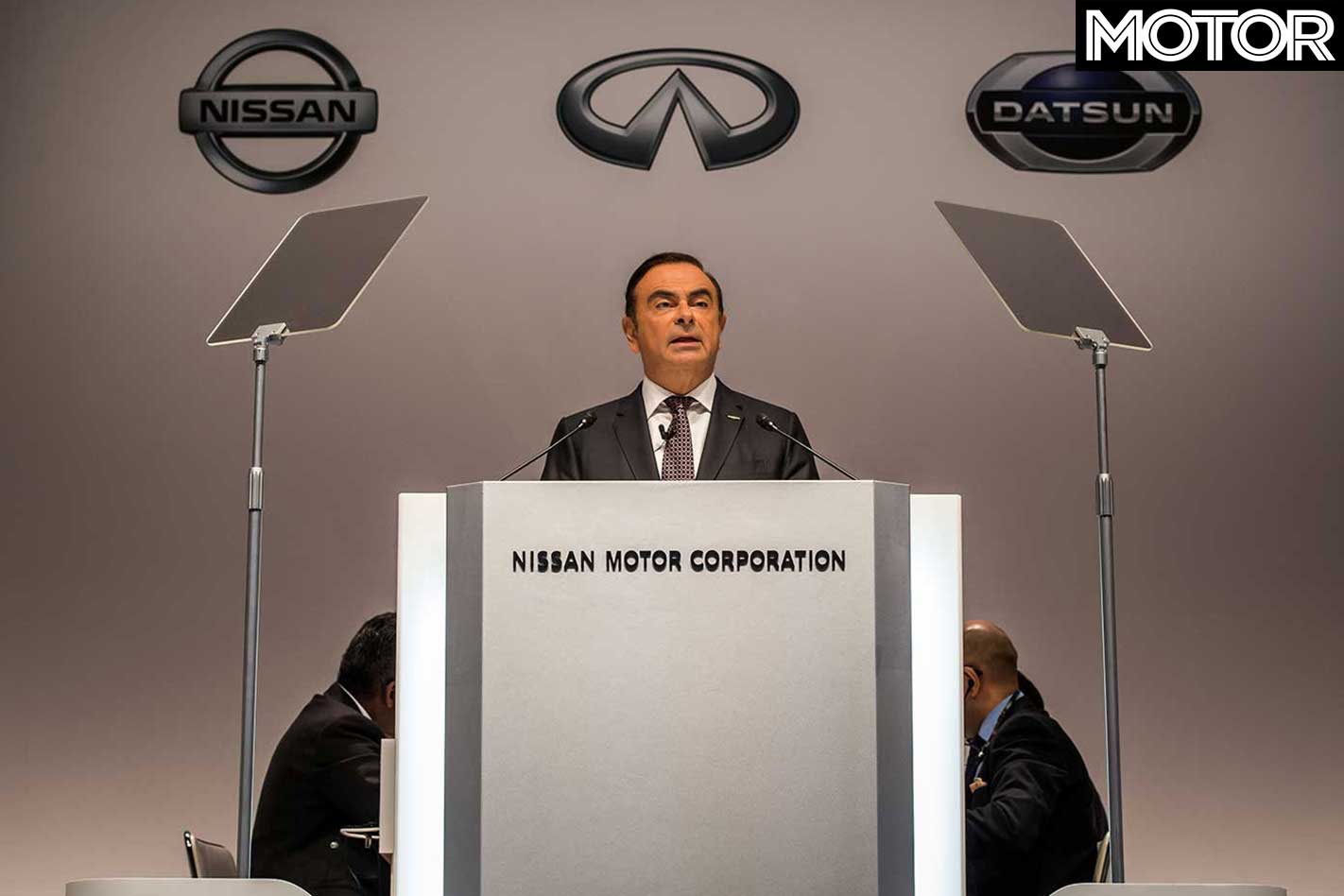
Recently dumped chairman Carlos Ghosn languishes in a Tokyo holding cell, and Nissan stands accused of picking a petulant fight with its majority owner, Renault, over being told what to do. And it was all started by a CEO who was due to be fired by Ghosn but decided to get in first in the hope of stopping an actual merger with Renault.
Nissan is 43 percent owned by Renault (after being bailed out of bankruptcy 20 years ago), and begrudges being beholden to the French. It’s stroppy that it makes most of the money but its own shares in Renault are non-voting, so it makes none of the big decisions. So the timing of the GT-R50’s launch is kind of not good for a whole set of reasons that have nothing to do with its mega speed or ultra-exclusivity or drop-dead gorgeousness.
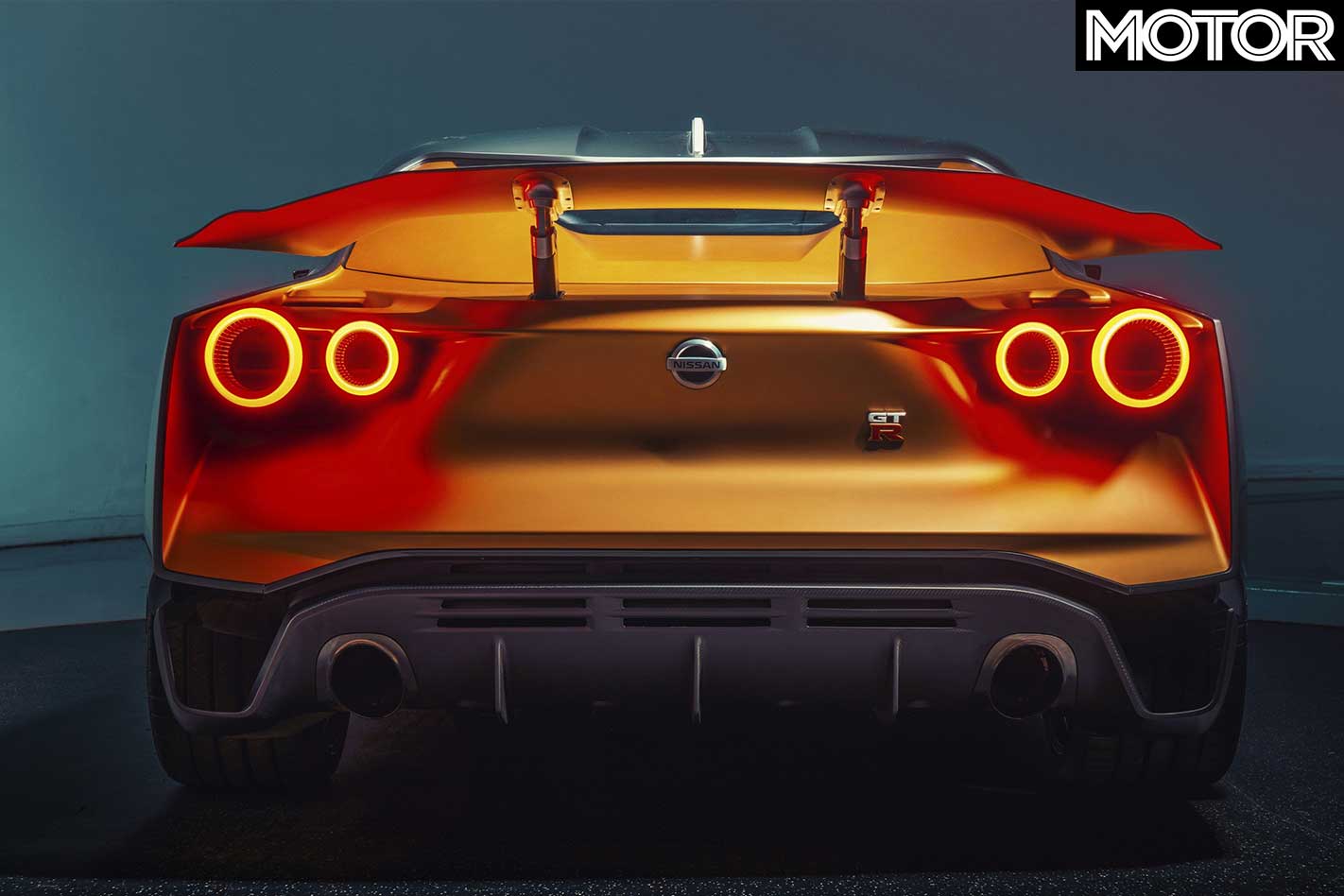
See, the 990,000 euro megacar (AUD$1.5 million plus hold-your-breath taxes here) will be sent out as a halo car in 2019 and 2020, to see how far upstream the GT-R badge’s track cred can stretch the Nissan brand and as a celebration of the 50th year of the first GT-R. And investors and collectors – the kind of people who will buy this car, speed or not – don’t like turmoil.
While that puts a huge question mark over whether enough people will still think Nissan’s brand can carry a million-euro car, the GT-R50 promises to be a monster.
And it will work like this: the GT3-aided engines will be built in a cleanroom in Japan and bolted into the 50 Italian-bound GT-Rs, along with the new transmission and the uprated suspension, and put on a boat. Then they’ll end up in Turin, where ItalDesign will give each of them their own bodywork, including a replacement roof, and their own interior, plus the anchor system from over near Bergamo.
And then, probably, they’ll head off into humidity controlled garages and nobody outside those 50 wealthy owners will ever see them again. But you can assume now that none of those 50 people will be Carlos Ghosn.

FAST FACTS Italdesign Nissan GT-R50
BODY: 2-door, 4-seat coupe DRIVE: all-wheel ENGINE: 3799cc V6, DOHC, 24v, twin-turbo BORE/STROKE: 95.5mm x 88.4mm POWER: 530kW TORQUE: 780Nm WEIGHT: 1700kg (estimate) TRANSMISSION: 6-speed dual-clutch L/W/h: 4700/1905/1365mm PRICE: AUD$1,567,000
From Concept to Production

Our dark and moody images are of the initial GT-R50 concept car – however, surprisingly little will change in the transition from concept to road car. The most obvious tweak is the fitment of more road-friendly side mirrors, but there are also minor adjustments to exterior bodywork.
Most of the changes are concentrated to the interior, which can be seen in production-ready form opposite page. Much inside, naturally, is shared with the Nismo GT-R, albeit customised to an extreme degree. It remains to be seen if any production GT-R50s will reach Australia.
Five things that make the GT-R50 Epic
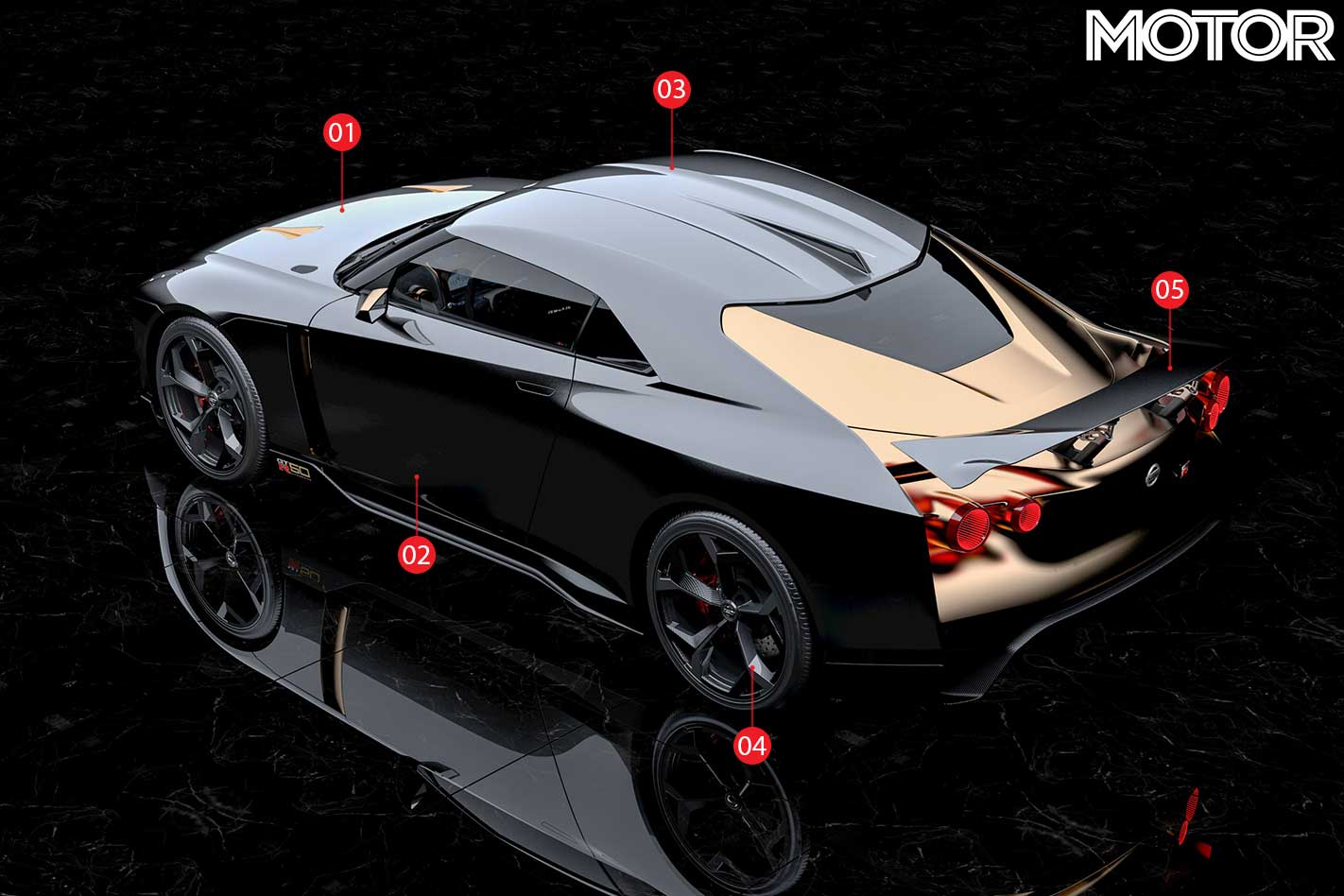
01 – Bigger turbos and massive internal changes result in a boost of some 90kW and 128Nm over even the GT-R NISMO 02 – Six-speed dual-clutch transaxle, diff and even driveshafts get upgraded to handle the massive extra performance 03 – Roof lowered by a little more than two inches (5.3cm) over a stock GT-R 04 – Custom 21-inch wheels shod with Michelin Pilot Super Sport rubber shrouding upgraded Brembo brakes 05 – Active aerodynamics, with the rear wing controllable by the driver from the cockpit





